Herbs First
Today we prepared the garden boxes for the 2014 fall planting season. First on the list was the herb box. It’s been almost two years since the herb box was planted. Most of the herbs were way overgrown. They had spread out everywhere and many had become very woody.
The herbs needed to be thinned out and cut back. Gardening buddy Bill and I cut all the herbs down to the ground, leaving a few leaves on what was left. They will come back fast and will be healthy. We had a pile of herb clippings about two feet square when we were finished.
Remove Solarization Cover
We removed the plastic sheeting used for solarization from the middle box. We do not cover the herb box, because most herbs are perennials. We usually cover the other two boxes from sometime in August until the beginning of October.
However, this year, only one box was covered. The okra planted in the extra the box behind Bill (who 5’10”) has grown to over 7 1/2 feet tall (never seen that before) and is still flowering and producing. The okra is doing so well that we are going to leave it until we get ready to plant tomatoes against the white tie-up bars.
Replacement Soil
Each year, the boxes lose soil from wind, rain and pulling out plants. To keep enough depth for root growth, the soil must be replaced. It takes about half a dozen bags of soil to do this. *A hint that works well… cutting the soil bag across each end and down the middle allows the dirt to be spread easily. Just pull on one side and roll the soil off into the garden.
Once the new soil is added, rake it out flat, spray water on it to level it and begin to plant.
New Plants
The only herb we replaced was the parsley. We’ve decided not to grow cilantro again. It really does not do well in this garden, and fresh cilantro is relatively inexpensive to get elsewhere.
This year, we have nine broccoli plants with Swiss chard planted all around the broccoli in the rest of the box. Broccoli grows tall and bulky. There is plenty of room to grow chard all around it. Once the broccoli is finished and is pulled up, the chard will continue to grow in the box.
We bought tomatoes, but the plants were dry and rather limp. They needed to be watered and given a few days to recover before they are planted.
So far, things are going well. I’m looking forward to another season of fresh vegetables.
Tags: above ground garden · Okra · parsley · Raised Garden · soil solarization · Tomatoes · Vegetables2 Comments
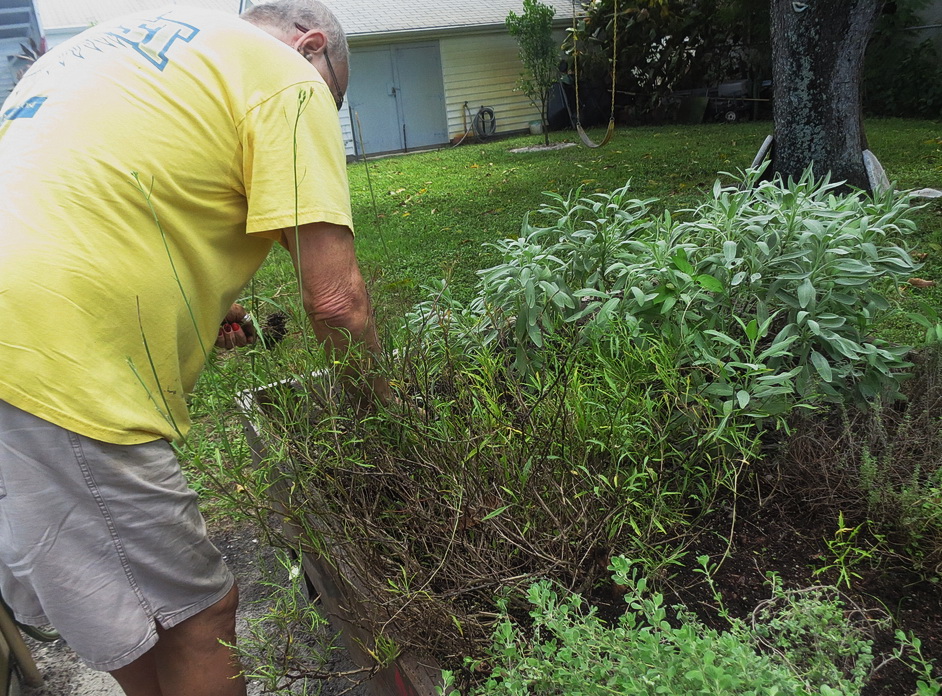
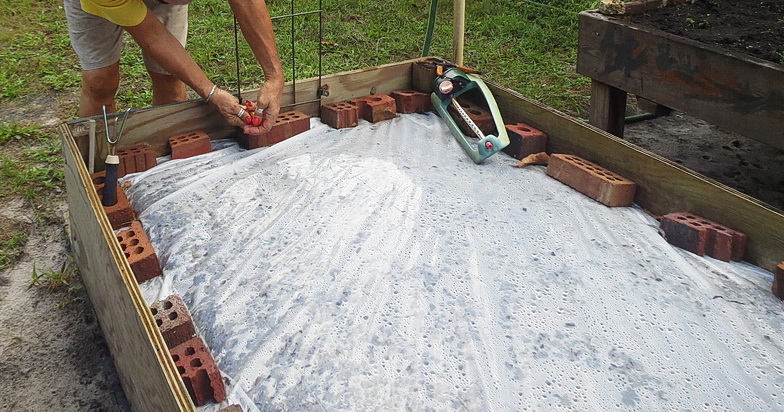
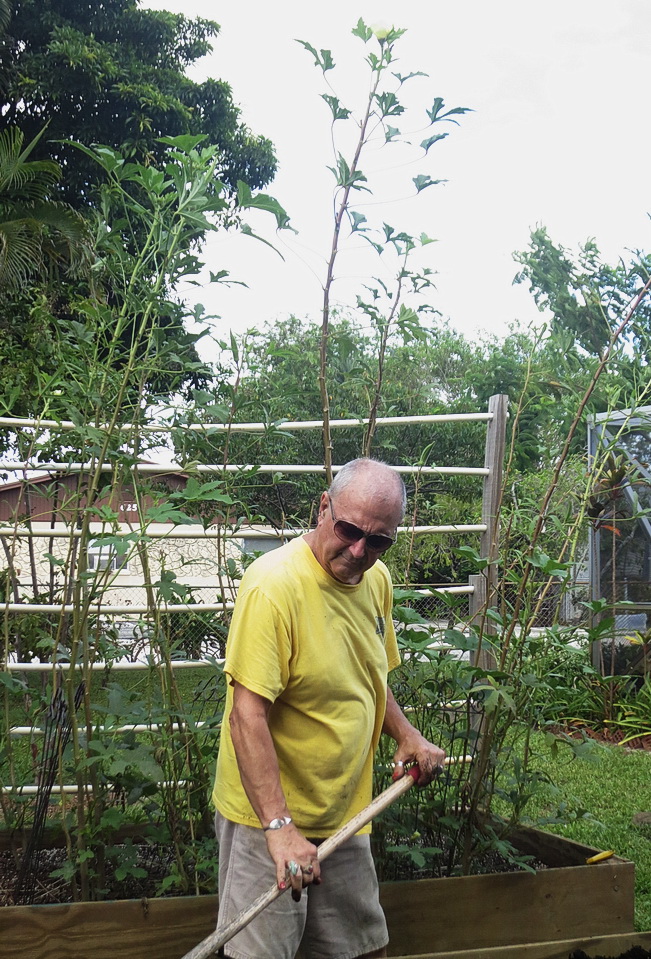
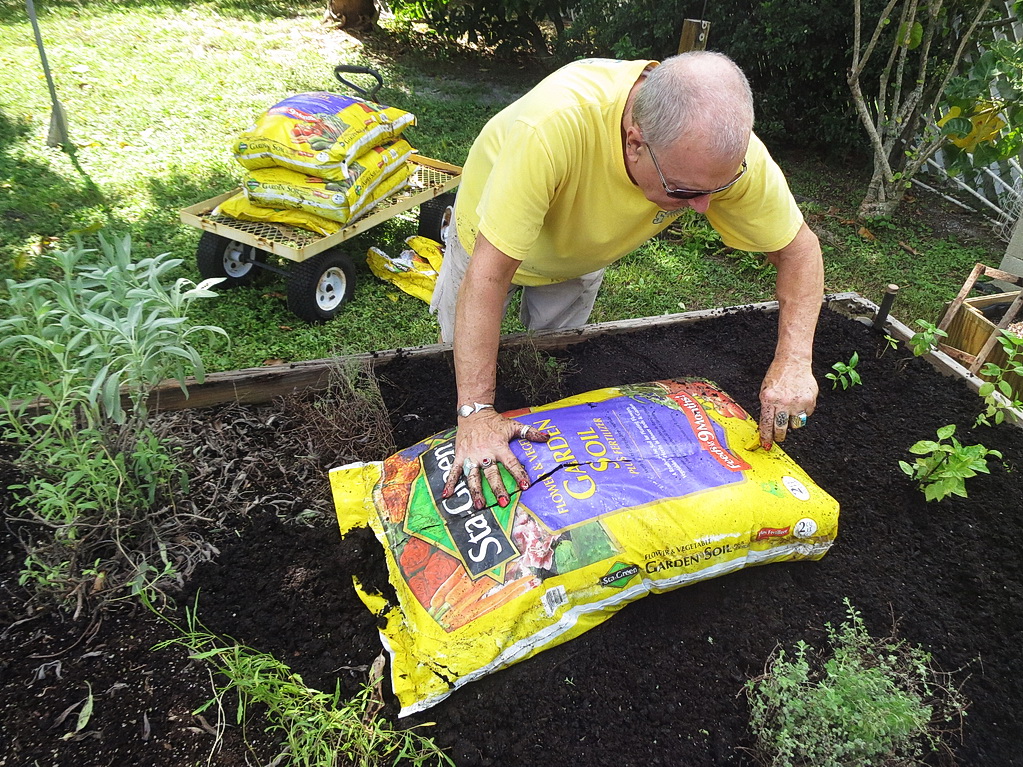
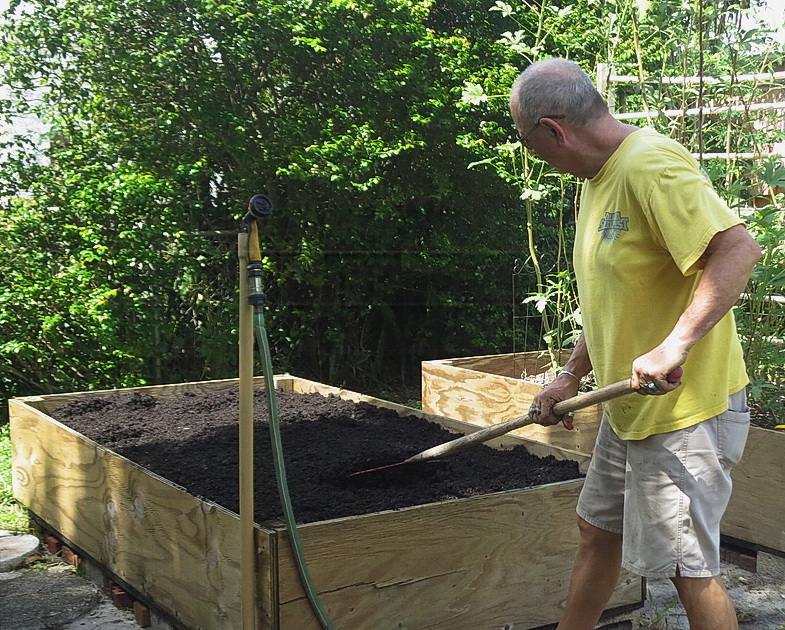
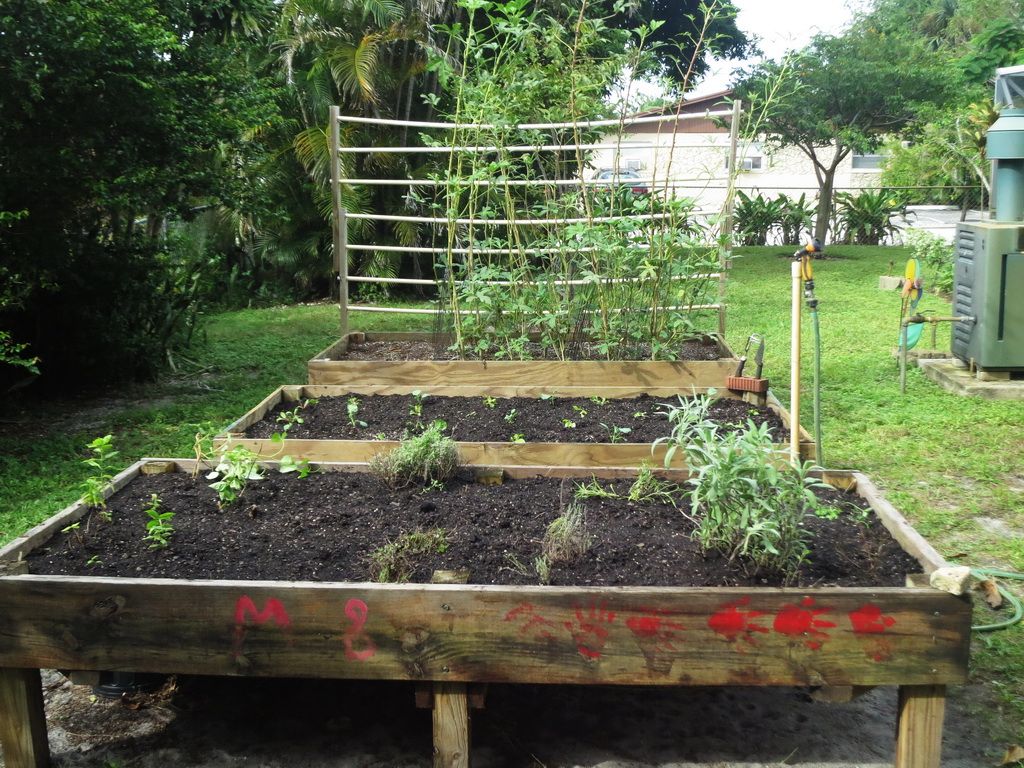
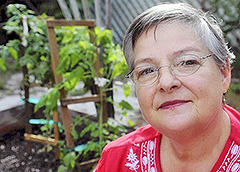
I’m interested in how you constructed your grow boxes— looks like some use plywood and others are raised above ground— would you be willing to do a post on how they are constructed?
Thanks
Hi, Harry.
All of my boxes are made of pressure treated plywood, and all of them are ‘raised’. For a while, I had a shallow box on legs for herbs. I have since replaced it with one made of plywood. My boxes have plywood bottoms in which holes have been drilled to allow the water to drain. The weed barrier is placed inside the box to contain the soil.
By raised, I mean… the ground underneath is cleared of all weeds, then covered with a sheet of black plastic sheeting. Next, half sized concrete blocks are placed on the plastic to keep the box from setting directly on the ground. Then, the box is placed on the blocks and filled.
I am attaching the link to the parts list and the directions for construction of the boxes.
http://www.watchmyfoodgrow.com/backyard-garden/raised-garden-from-scratch-part-two/